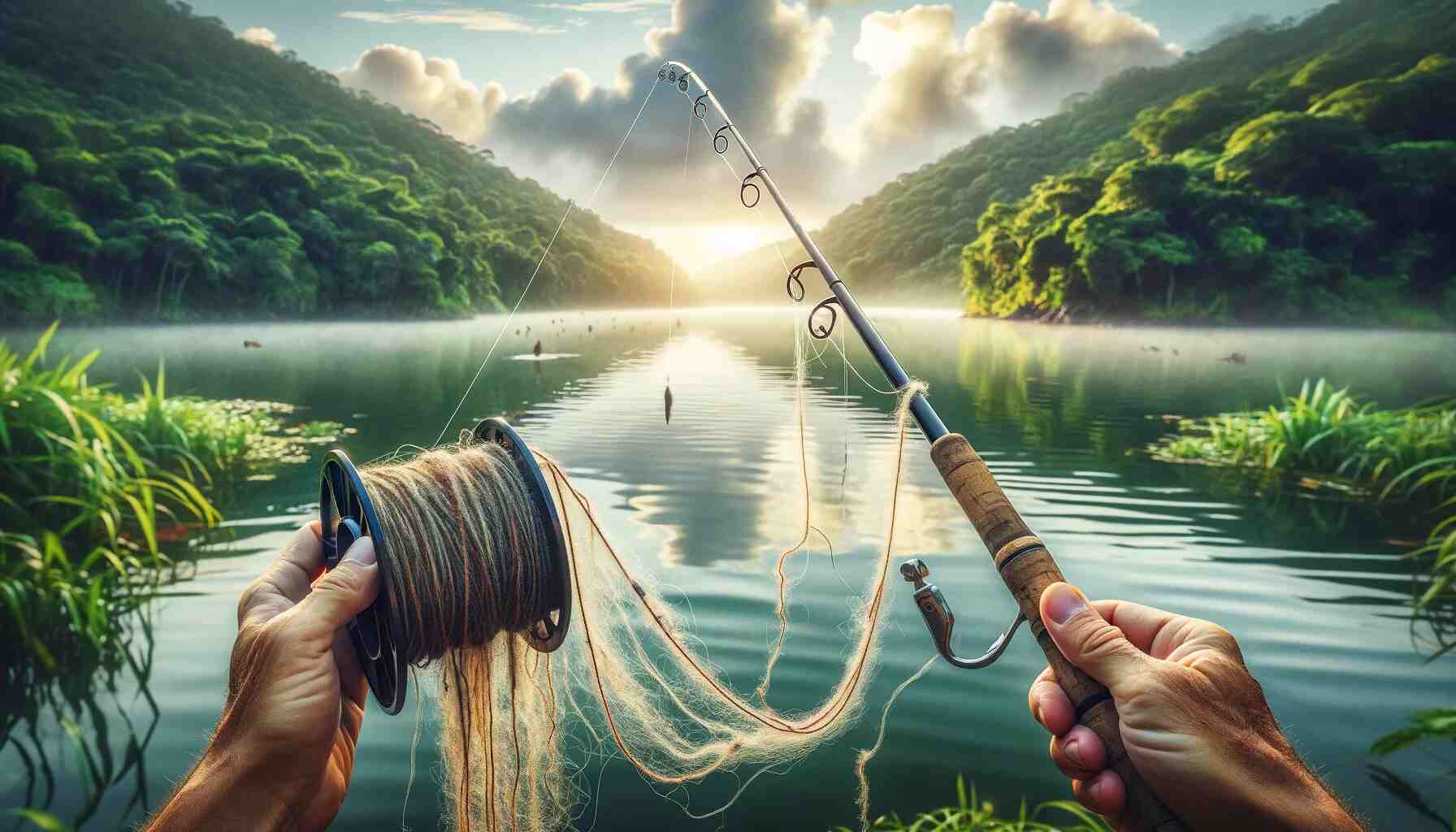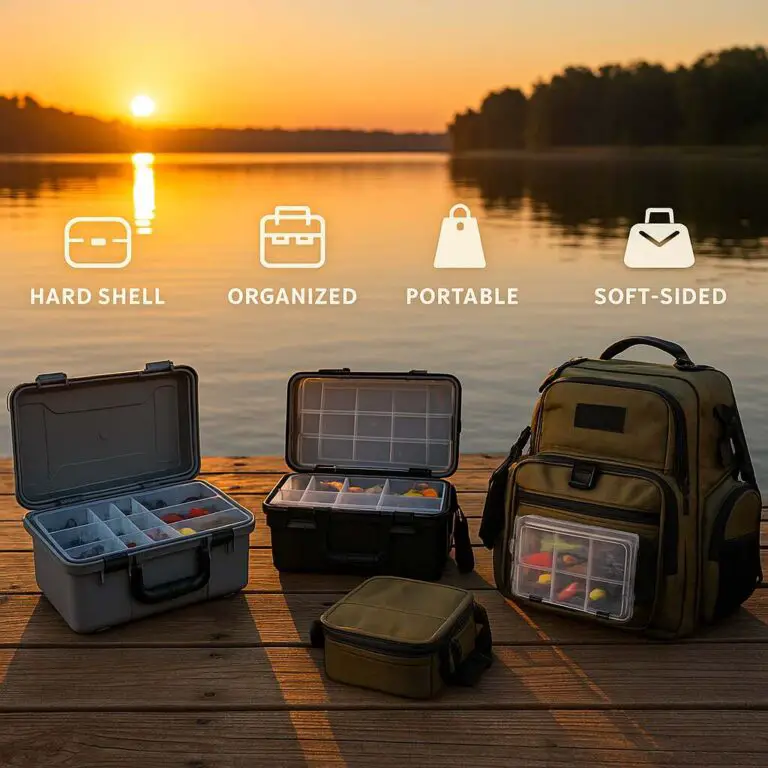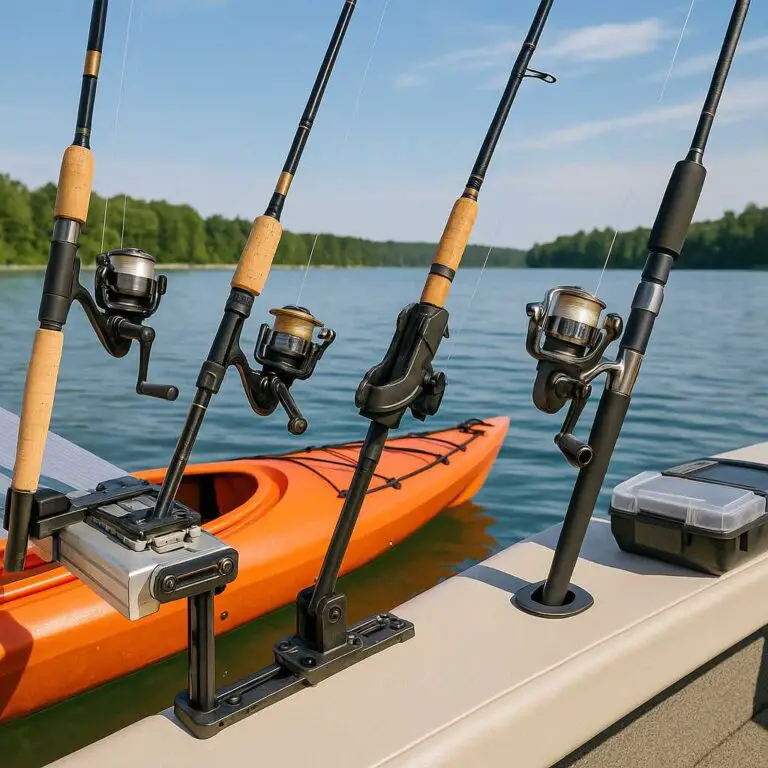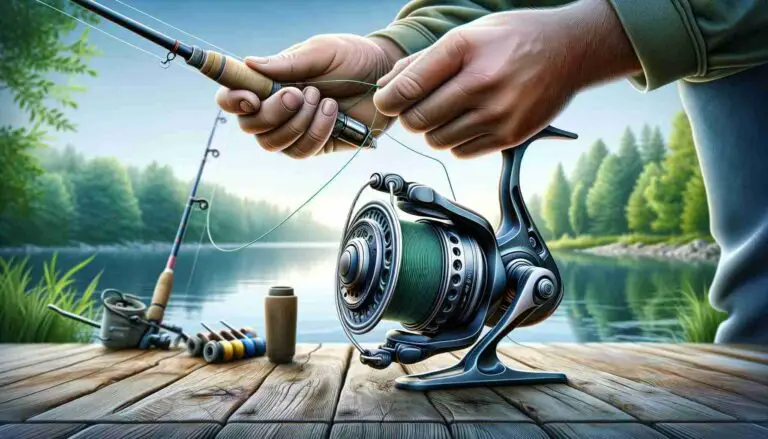If you’re an avid angler, you know that fishing gear can make or break your day on the water. Among your many tools and gadgets, the fishing line is a crucial component that often gets the spotlight. But let’s get down to it – does fishing line actually go bad over time? Is that old spool of line you found in your tackle box still trustworthy?
Fishing lines don’t have a fixed expiration date, but they can deteriorate over time due to factors like UV exposure, wear, and improper storage.
In this in-depth guide, we’re going to explore the world of fishing lines, dispel some common myths, and provide you with valuable tips for keeping your line in top-notch condition. By the end of this article, you’ll be armed with all the information you need to make sure your fishing line is ready for your next angling adventure.
Getting to Know Your Fishing Line Types
Before we dive into the big question of whether fishing line can go bad, let’s get acquainted with the various types of fishing lines out there. There are three main categories: monofilament, fluorocarbon, and braided lines.
1. Monofilament Fishing Line
Personality Traits: Monofilament fishing line is like that dependable old friend who’s always ready to lend a hand. It’s affordable, versatile, and user-friendly. This line is made from a single strand of nylon and is known for being stretchy, buoyant, and easy to work with.
Myth Busted: Some folks believe that monofilament lines become brittle and lose their strength as they age. But the truth is, while they can deteriorate under certain conditions, they don’t simply go bad just by getting older.
2. Fluorocarbon Fishing Line
Personality Traits: Fluorocarbon fishing line is the introverted genius of the fishing line world. It’s nearly invisible underwater, boasts low visibility, and sinks like a pro – perfect for those stealthy underwater maneuvers.
Myth Busted: There’s a common misconception that fluorocarbon fishing lines are invincible and never degrade. However, just like all other fishing lines, they can succumb to environmental factors and need some TLC.
3. Braided Fishing Line
Personality Traits: Braided fishing lines are the strong and silent type. Woven from multiple strands of fiber, they’re thin yet incredibly tough. These lines are sensitive and don’t stretch much, giving you the upper hand in sensing underwater activity.
Myth Busted: Despite the belief that braided lines last forever, they too can weaken over time, especially when exposed to harsh conditions. Regular maintenance is your secret weapon for keeping them in tip-top shape.
The Expiry Date Conundrum: Understanding if Fishing Line Goes Bad
So, let’s tackle the million-dollar question: does fishing line have an expiration date? The simple answer is no, fishing lines don’t come with a “best before” label. However, their lifespan depends on several factors:
1. Storage Conditions
Picture your fishing line as a fine wine. It doesn’t age well in direct sunlight, extreme temperatures, or high humidity. To keep it fresh, store your lines in a cool, dark place when they’re not in action.
2. Ultraviolet (UV) Exposure
UV rays from the sun can be the arch-nemesis of your fishing line. Prolonged exposure can make it weaker and more prone to snapping. Protect your line with a UV-blocking spray or a line conditioner.
3. Abrasive Surfaces
Imagine your fishing line as a delicate thread. Constant friction with abrasive surfaces like rocks, coral, or the edges of your boat can lead to wear and tear. Keep an eye out for any signs of damage and replace the line when necessary.
4. Tension and Stress
Fishing lines take a lot of heat during their lifetime, especially when you’re casting, reeling, and battling fish. Regularly check for nicks, knots, or any areas showing weakness.
5. Chemical Exposure
Chemicals like gasoline, sunscreen, or insect repellent can be kryptonite to fishing lines. Be cautious when handling these substances while fishing and make sure to wash your hands thoroughly before touching your line.
When to Bid Farewell to Your Fishing Line
Even though fishing lines don’t have a fixed expiration date, they do send out distress signals when they’re past their prime. Ignoring these signals can lead to frustration on your next fishing expedition. Here are some red flags to keep an eye out for:
1. Visible Wear and Tear
Imagine your fishing line as your trusty jeans. If you see signs of fraying, nicks, or discoloration, it’s telling you that it’s not as strong as it used to be. It’s time for retirement.
2. Reduced Strength
Take your line for a strength test. If it snaps with minimal force, it’s like your once-mighty superhero losing their powers. Say your goodbyes and get a new one.
3. Memory Effect
Monofilament and fluorocarbon lines can sometimes get a bit forgetful. If they keep coiling or tangling even after being cast, it’s a sign of memory issues – time to let them retire.
4. Reduced Sensitivity
Braided lines are known for their super-senses underwater. But as they age, they might become a bit dull in sensing subtle movements or bites. If you feel they’re not as responsive, it’s time to move on.
5. Excessive Knots
If your line has a newfound talent for tying knots on its own, it’s a sign it’s becoming brittle and prone to tangling. Frequent knotting can lead to a tangled mess and missed opportunities.
6. Unexplained Breaks
Imagine your line as the safety net at a circus. If it keeps breaking for no apparent reason, it’s not a reliable safety net anymore. Better to get a new one before losing that trophy fish.
Keeping Your Line in Top Shape
To extend the life of your fishing line and ensure it performs like a champ, follow these maintenance tips:
1. Give It a Once-Over
Treat your fishing line like an old friend – check on it regularly. Run your fingers along its length, looking for any imperfections. If you spot any, replace those sections pronto.
2. Show It Some Love
After a fishing trip, give your line a little spa day. Clean it with a damp cloth or sponge to remove dirt, debris, and any nasties that might weaken it.
3. Line Conditioners to the Rescue
Line conditioners are like magic potions for your fishing line. They add a layer of lubrication, reduce friction, and keep your line performing at its best.
4. Spooling with Care
When spooling your reel, make sure the line winds evenly and tightly. Proper spooling reduces the risk of line twists and tangles, which can wear down the line.
5. Store It Right
Imagine your fishing line as a delicate flower – it needs the right environment. Store it in a cool, dark place away from direct sunlight and extreme temperatures. Line spoolers and storage containers can help keep things organized.
6. Don’t Overstuff Your Reel
Just like you wouldn’t stuff your suitcase until it bursts, avoid overfilling your reel. Too much line can put unnecessary pressure on it, leading to weakened or snapped lines. Follow the manufacturer’s recommendations for line capacity.
7. Know When to Say Goodbye
If you’re unsure about your line’s integrity or spot any of the warning signs we mentioned earlier, don’t hesitate to replace it. It’s a small investment compared to the disappointment of losing a potential trophy catch.
Busting Fishing Line Myths
The world of fishing is full of myths and misconceptions. Let’s take a moment to debunk some common fishing line myths and set the record straight:
Myth 1: “You can never have too much line on your reel.”
Reality: Overstuffing your reel can lead to issues with line management and reduced casting distance. Follow the manufacturer’s recommendations for line capacity.
Myth 2: “Fluorocarbon fishing lines are invisible underwater.”
Reality: While fluorocarbon lines have low visibility underwater, they’re not entirely invisible. Fish can still spot them under certain conditions, especially in clear water.
Myth 3: “Monofilament lines are better for beginners.”
Reality: Monofilament lines are often recommended for beginners because of their forgiving nature. However, the choice of fishing line should depend on the specific technique and conditions you’re fishing in.
Myth 4: “Braided lines last forever.”
Reality: Braided lines are durable, but they can weaken over time due to wear and exposure to the elements. Regular maintenance is key to ensuring their longevity.
Myth 5: “You can’t catch big fish with a light fishing line.”
Reality: Light fishing lines can indeed land big fish when paired with the right tackle and techniques. Many anglers target trophy-sized fish with light lines to up the challenge.
Choosing Your Fishing Line Wisely
Picking the right fishing line is like choosing the perfect tool for the job. Here are some factors to consider when selecting the right line:
1. Fishing Technique
Different techniques demand different types of fishing lines. For finesse fishing, a light fluorocarbon line might be ideal, while heavy-duty applications may require a strong braided line.
2. Water Conditions
Think about the water’s clarity and depth. Clearwater might call for a low-visibility fluorocarbon line, while murkier waters can accommodate a more visible monofilament line.
3. Target Species
The fish you’re after can dictate your line choice. Some species have teeth that can slice through certain lines. Do your research on your target species’ habits to make an informed decision.
4. Personal Preferences
Ultimately, your fishing style and personal preferences play a big role in line selection. Some anglers love the sensitivity of braided lines, while others appreciate the near invisibility of fluorocarbon.
But because having a great fishing line is not enough, here’s the best time of the day to go fishing.
Conclusion
In the grand tapestry of fishing, fishing lines may not have a set expiration date, but they can certainly show their age. Through proper inspection, care, and a keen eye for warning signs, you can extend the life of your fishing line and ensure it’s ready to perform when you need it most.
And let’s not forget the myths – they’ve been busted wide open. Whether it’s the misconception of limitless lines on your reel or the belief that fluorocarbon lines are invisible, we’ve set the record straight.
So, as you gear up for your next fishing adventure, remember that your fishing line is your trusty companion in the quest for that trophy catch. Treat it right, and it’ll reward you with many successful outings. Here’s to tight lines and unforgettable fishing experiences! Happy angling!








